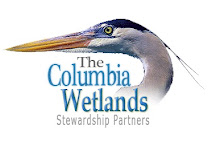 |
| Red-tailed Hawk occupies a wide range of habitats and altitudes Photo by Larry Halverson |
Hillary Page from the Nature Conservancy of Canada and Cam Gillies from Eagle-Eye Tours are offering an atlassing walk to the Marion Creek Benchlands above Columbia Lake. This is an area that NCC is on the cusp of purchasing and it has some beautiful habitat. There are marshes, shrubby wet areas, aspen, grassland and forests. The diversity of birds should be spectacular! Flycatchers, warblers, and vireos should be abundant. Hillary will talk about NCC's project and Cam will review how to atlas.
Everyone is welcome including people that have not atlassed at all. Bring your binos, notebook, pencil and a lunch.
Friday June 3rd,
Meet 8:00 am at the Hoodoos gas station.
Carpooling from there up to the property.
Finish about 1 pm.
For more info on the field trip contact cam.gillies@telus.net and to learn about the BC Breeding Bird Atlas go to http://www.birdatlas.bc.ca/english/index.jsp











